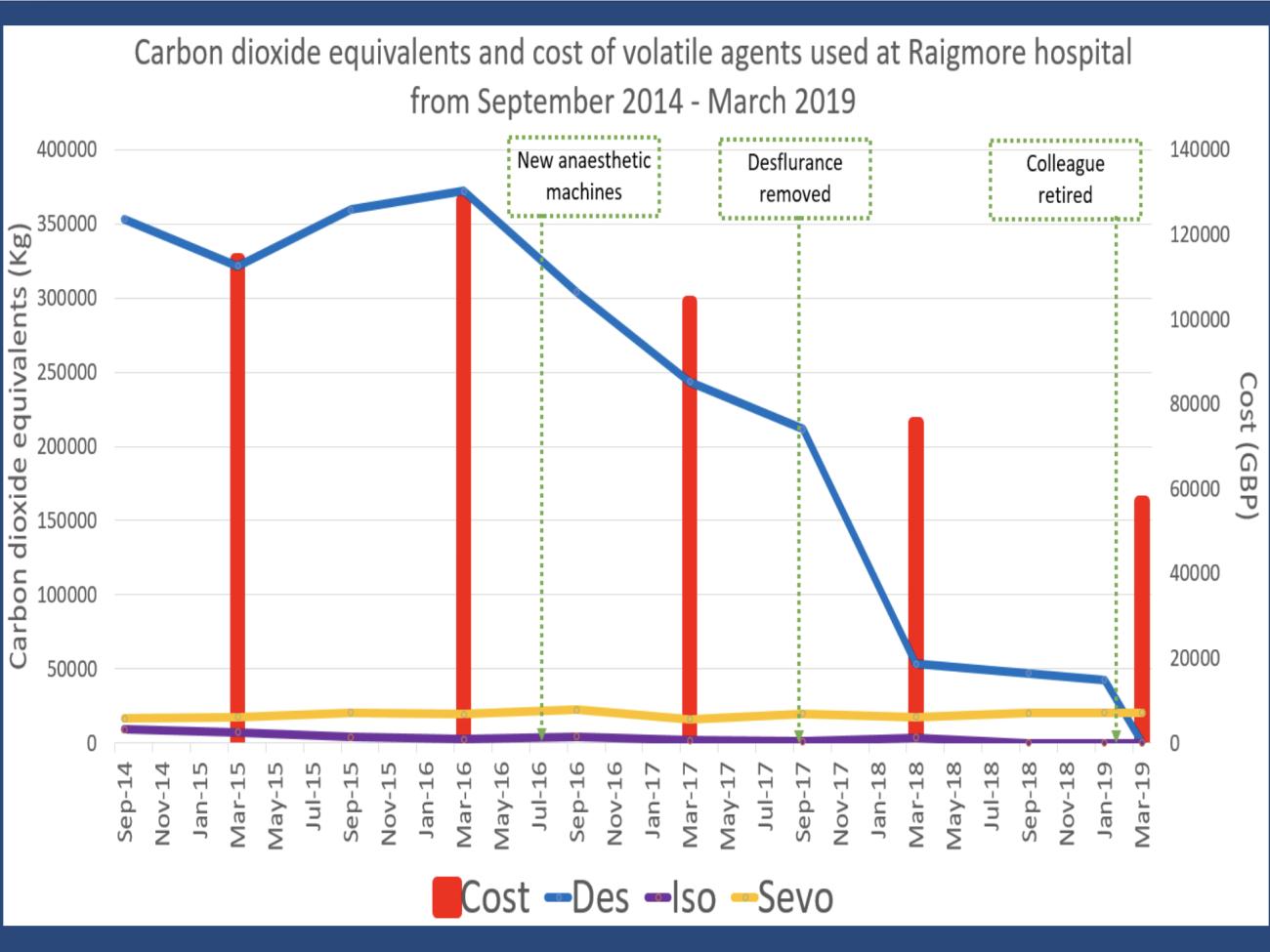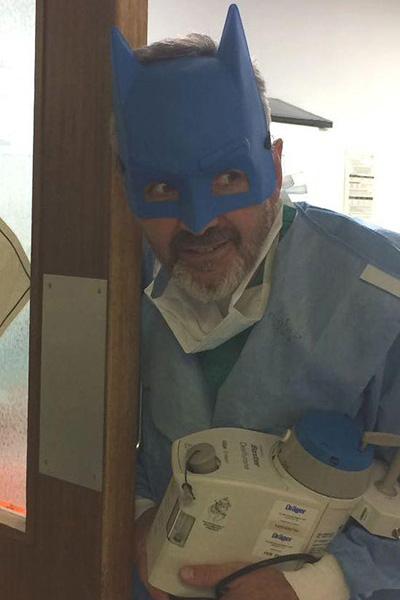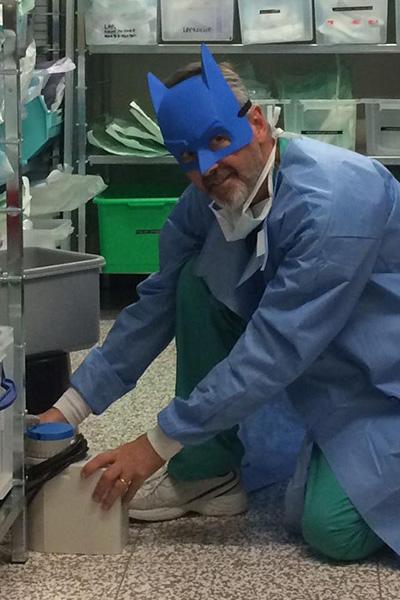A guest post from our member NHS Highland (Scotland, UK)
Dr Kenneth Barker, Consultant Anaesthetist at Raigmore Hospital explains how he and his colleagues have reduced the carbon equivalent emissions from their anaesthetic activities.
Many anaesthetists are aware that volatile anaesthetic agents are bad for the environment, but just how bad, and what can be done about it is not universally understood. Raigmore Hospital in Inverness has shown that taking practical steps to reduce the environmental impact on anaesthesia practices are relatively simple but effective and yield co-benefits.
Research shows that volatile anaesthetic agents account for 5% of a typical hospital’s carbon footprint. The NHS is the biggest public service contributor to the UK’s greenhouse emissions, but the use of these volatiles is not routinely monitored. Per hour of anaesthesia, the agent Desflurane is 60 times worse than Sevoflurane.
Whilst these two gases work in the same way and have minor differences, switching from Desflurane to Sevoflurane has cut Raigmore Hospital’s carbon (CO2e) emissions from volatile agents by 4.5% (from 5%) to 0.5%.
The anaesthesia team at Raigmore held a workshop on the environmental impact of our work following a presentation from Dr Tom Pierce, Sustainability Advisor at the Royal College of Anaesthetists, who spoke at the Scottish Society of Anaesthetists meeting (learn more here).
- To fly 240 people from London to New York, should you use one aeroplane fully loaded, or 60 similar sized jets each carrying just 4 people?
- Eight hours of anaesthesia using Desflurane at moderate flows can emit the same amount of CO2 as driving a car 6770km.
Using such comparisons helped participants understand the significant difference in CO2e of different anaesthetic agents.
A key factor in reducing the emissions from anaesthesia was a departmental agreement to remove Desflurane as the default volatile in anaesthetic machines. Whilst the drug is still available, it is now stored separately and, if used, it is then removed at the end of each case. This simple but effective change had a remarkable reduction in our anaesthesia emissions.
![]()
Over a short period of time, the CO2e output from volatile agents dropped by 81%, with an additional benefit of a 52% reduction in costs. Working with pharmacy and management colleagues, we have been able to re-allocate some of these financial savings – much to the Chief Executive’s pleasure. Whilst there was some initial resistance from anaesthetists, early in 2019 at Raigmore hospital we agreed to make Desflurane a special order only item, the first NHS board in the UK to make this change. No further Desflurane has been ordered since, and it is now a non-stock item for all of NHS Highland; two hospitals have returned their stock to the manufacturer, and one is using up its small remaining stock.
Furthermore to this behaviour change, working with the grassroots Scottish Environmental Anaesthesia Group we have helped this method to be successfully employed in other Scottish hospitals. The group also supports our hospital environment teams and promotes many other green activities in the Scottish healthcare sector such as metal recycling or waste segregation. Discussions amongst the group about its activities in London and Cardiff are resulting in an increased awareness and continued efforts minimise the environmental damage from anaesthetic volatiles, as well as gathering press attention in the UK.
Making the change in your department can be quite straightforward, but it is important to:
- Educate your colleagues about the environmental impact of the drugs they are using every day.
- Agree to remove Desflurane as a default - it can still be available, but not immediately to hand.
- Ask your nursing colleagues to help remove Desflurane after each use.
- Not worry about objections - colleagues concerned about the environment will accelerate the change and help spread the message.
Further reading
Pilot project | Fostering Low Carbon healthcare in Europe | This HCWH Europe project measured the carbon footprints of European hospitals with particular focus on greenhouse gas (GHG) emissions from the use of anaesthetic gases.
![]()
![]()


